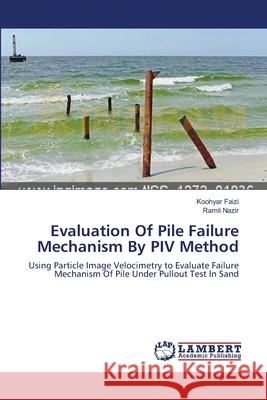Evaluation Of Pile Failure Mechanism By PIV Method » książka
Evaluation Of Pile Failure Mechanism By PIV Method
ISBN-13: 9783659394430 / Angielski / Miękka / 2013 / 116 str.
Interpretation of the load test results rely on predicting the failure load or limit load by applying mathematical or graphical techniques is important in geotechnical engineering field in order to applying a proper factor of safety to get the pile working load.Hence it is important to determine the ultimate or limit load as accurately as possible. So reliable assessment of soil behaviour in element tests or physical models requires accurate measurement of deformations and strains. This book presents a close photogrammetric technique and Particle Image Velocimetry (PIV) were employed to observe the failure patterns due to uplift force on pre formed concrete piles with a different slenderness ratio. PIV is a velocity-measuring procedure originally developed in the field of experimental fluid mechanics, and is reviewed by Adrian (1991). GeoPIV uses the principles of PIV to gather displacement data from sequences of digital images captured during geotechnical model and element tests. The development and performance of the software are described in detail by White (2002).
Interpretation of the load test results rely on predicting the failure load or limit load by applying mathematical or graphical techniques is important in geotechnical engineering field in order to applying a proper factor of safety to get the pile working load.Hence it is important to determine the ultimate or limit load as accurately as possible. So reliable assessment of soil behaviour in element tests or physical models requires accurate measurement of deformations and strains. This book presents a close photogrammetric technique and Particle Image Velocimetry (PIV) were employed to observe the failure patterns due to uplift force on pre formed concrete piles with a different slenderness ratio. PIV is a velocity-measuring procedure originally developed in the field of experimental fluid mechanics, and is reviewed by Adrian (1991). GeoPIV uses the principles of PIV to gather displacement data from sequences of digital images captured during geotechnical model and element tests. The development and performance of the software are described in detail by White (2002).











